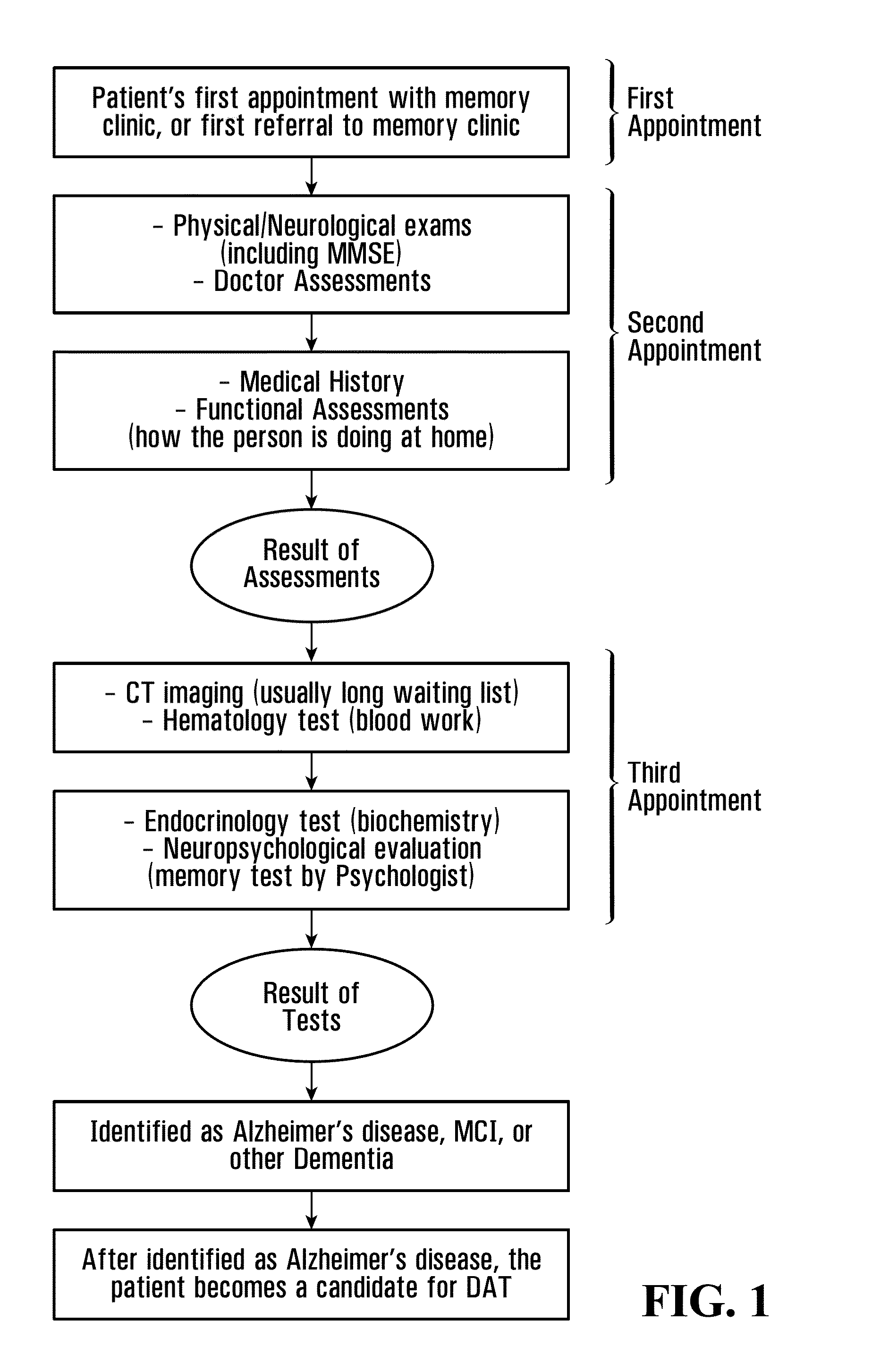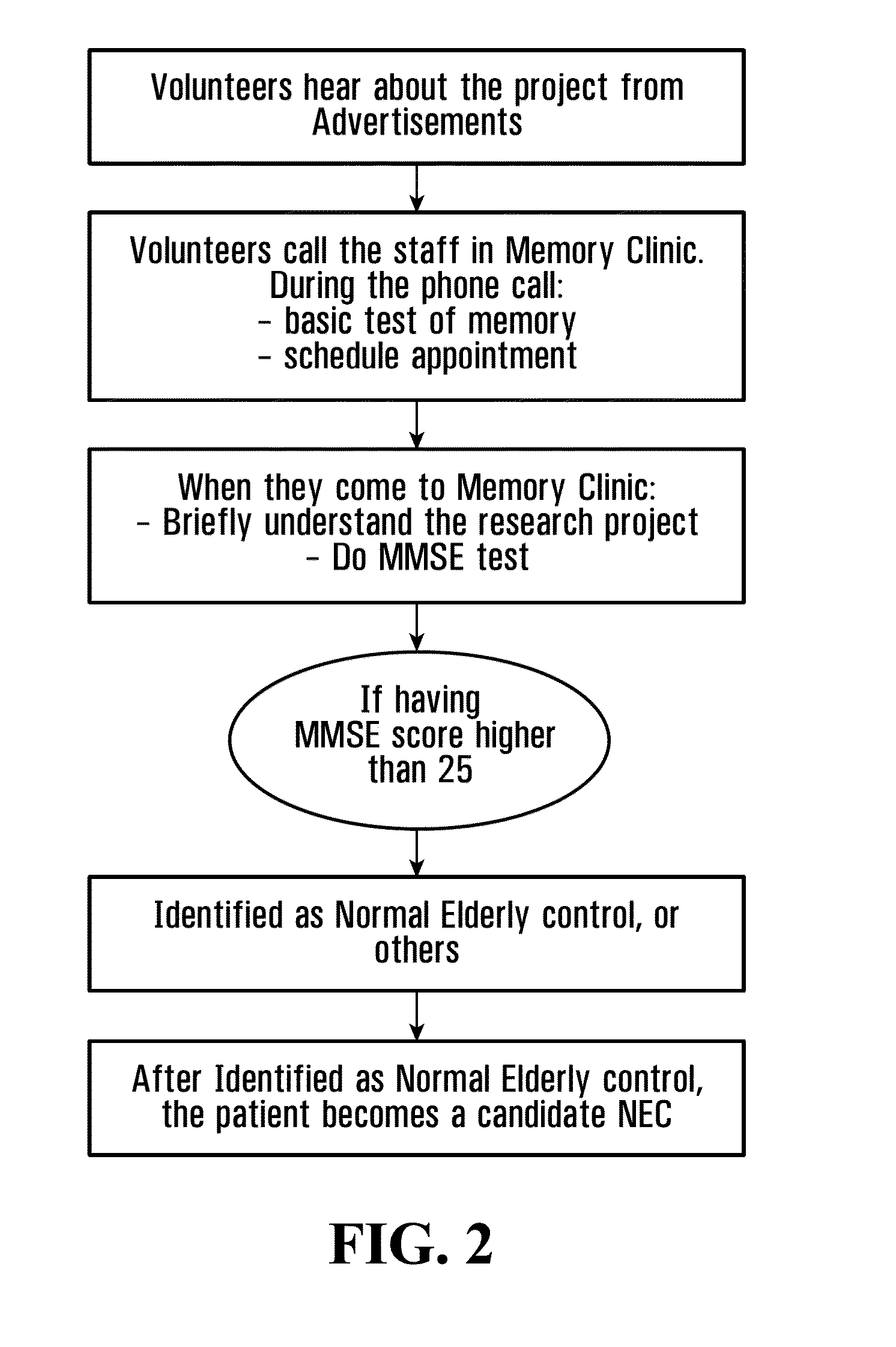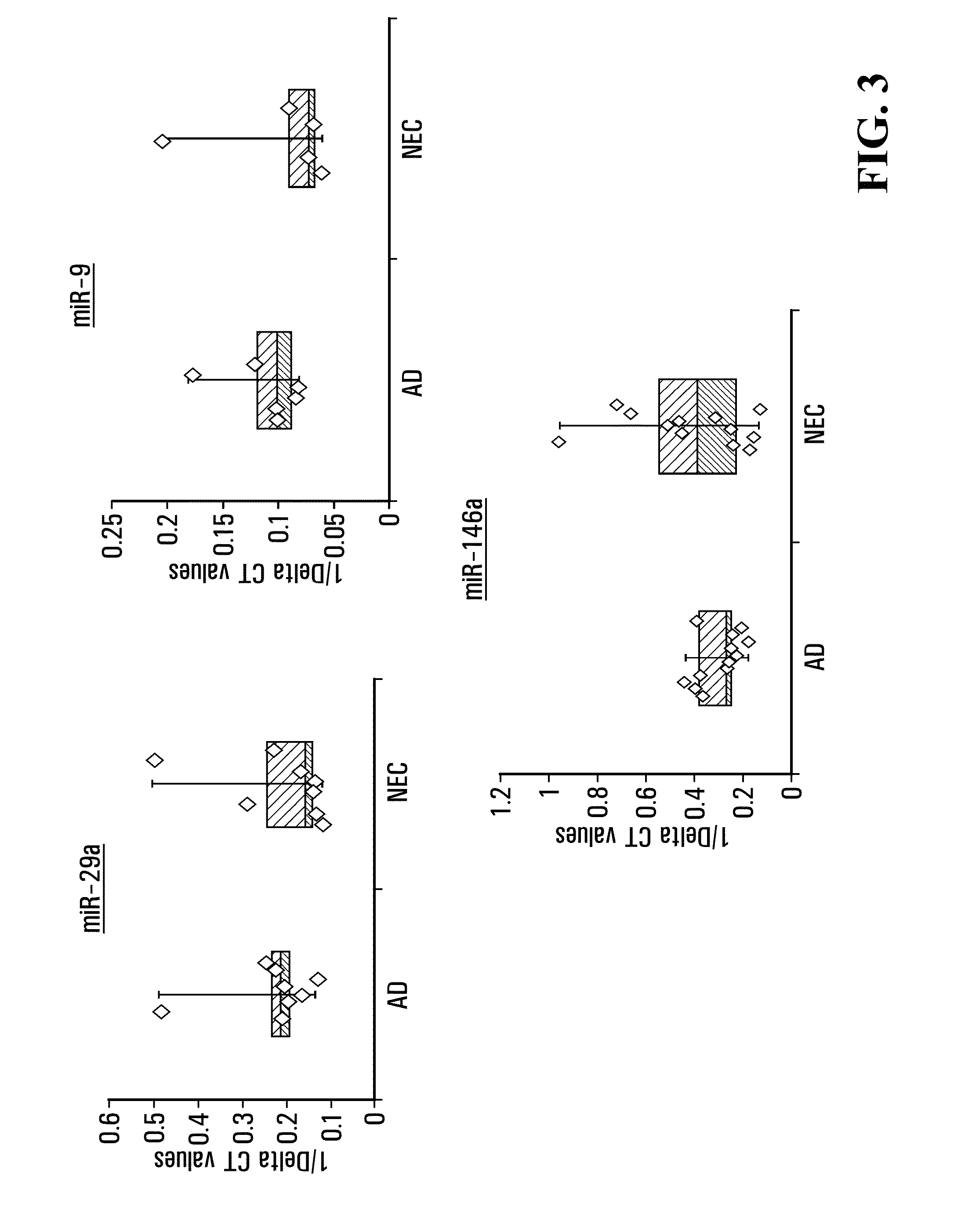Biomarker for Alzheimer's Disease and/or Mild Cognitive Impairment, and Use Thereof
a biomarker and alzheimer's disease technology, applied in the field of ##biomarkers of alzheimer's disease and/or mild cognitive impairment, can solve the problems of insufficient post-mortem brain examination, high cost of neuroimaging modalities, and inability to achieve definitive diagnosis of ad, so as to reduce the risk of an individual, reduce the risk, and reduce the risk.
- Summary
- Abstract
- Description
- Claims
- Application Information
AI Technical Summary
Benefits of technology
Problems solved by technology
Method used
Image
Examples
examples
Materials and Methods
I—Experimental Individuals
[0190]AD and NEC populations are recruited and processed at a university hospital subcontract site. The Clinic is a member of the National Institute on Aging (NIA) Alzheimer's Disease Neuroimaging Initiative (ADNI) consortium. FIGS. 1 and 2 generally illustrate the recruitment and processing of AD and NEC individuals.
II—AD and MCI Patient Assessment
[0191]The AD subjects all have AD proven by standard clinical criteria [McKhann et al., (1984) Neurology 34(7): 939-944]. The patients / research subjects are all well characterized, with geriatric and neurological exams, blood work, CT scans, and MRIs. The clinical assessments (of significant impairment in 2 or more cognitive domains, as well as in function) are supported by documentation of abnormal performance on memory and other cognitive domains (with age and education norms) of at least 1.5 standard deviations below the mean for the subject's age, on the neuropsychological battery describ...
PUM
| Property | Measurement | Unit |
|---|---|---|
| pH | aaaaa | aaaaa |
| temperature | aaaaa | aaaaa |
| area | aaaaa | aaaaa |
Abstract
Description
Claims
Application Information
 Login to View More
Login to View More - R&D
- Intellectual Property
- Life Sciences
- Materials
- Tech Scout
- Unparalleled Data Quality
- Higher Quality Content
- 60% Fewer Hallucinations
Browse by: Latest US Patents, China's latest patents, Technical Efficacy Thesaurus, Application Domain, Technology Topic, Popular Technical Reports.
© 2025 PatSnap. All rights reserved.Legal|Privacy policy|Modern Slavery Act Transparency Statement|Sitemap|About US| Contact US: help@patsnap.com



